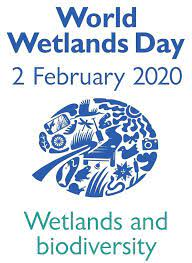CURRENT AFFAIRS
Get the most updated and recent current affair content on Padhaikaro.com
World Wetland day
- Vaid's ICS, Lucknow
- 04, Feb 2022

Why in News?
- On the occasion of World Wetlands Day, Khijadia Wildlife Sanctuary in Gujarat and Bakhira Wildlife Sanctuary in Uttar Pradesh have been added to the Ramsar site.
- India has a network of 49 such sites, the highest in South Asia, covering 10,93,636 hectares.
- The certification brings visibility to ecologically sensitive wetlands and helps in conservation.
About World Wetlands Day
- It is celebrated each year on 2 February to raise awareness about wetlands.
- This day also marks the anniversary of the Convention on Wetlands, which was adopted as an international treaty in 1971.
- This year’s celebration of World Wetlands Day in 2022 is especially significant — as on 30 August 2021, the UN General Assembly adopted Resolution 75/317 that established 2 February as World Wetlands Day.
- Theme: Wetlands Action for People and Nature which is highlighting the importance of actions to ensure the conservation and sustainable use of wetlands for humans and planetary health.
What are the Wetlands?
- Wetlands are land areas, which are seasonally or permanently flooded with water.
- The Ramsar Convention’s definition for wetlands includes “areas of marsh, fen, peatland or water, whether natural or artificial, permanent or temporary, with water that is static or flowing, fresh, brackish or salt, including areas of marine water the depth of which, at low tides, does not exceed six meters”.
- Fishponds, rice paddies, and saltpans are human-made wetlands.
Challenges to Wetlands
Data Analyis
- Nearly 90% of the world’s wetlands have been degraded since the 1700s, and we are losing wetlands three times faster than forests.
- As per the Ramsar Convention on wetlands report, the wetlands are disappearing three times faster than forests, with 35% of the wetlands lost from 1970-to 2015.
- It is an alarming situation, demanding urgent attention as 40% of the world’s plant and animal species breed in wetlands.
- Ignoring Urban Wetlands: The conservation efforts mostly centred on the notified Ramsar sites ignore several other urban wetlands that are equally important.
- Lack of Awareness: In addition to urbanisation needs, lack of awareness and knowledge on wetlands and their ecosystem services can be blamed for this widespread loss.
- The existing laws completely ignore the participation of local communities in governing and monitoring wetlands.
About the Ramsar Convention,
- The Convention was adopted in the Iranian city of Ramsar in 1971 and came into force in 1975.
- The convention entered into force in India on 1 February 1982.
- It is one of the oldest intergovernmental treaties signed by member countries to preserve the ecological character of their wetlands of international importance.
- Aim: To develop and maintain an international network of wetlands that are important for the conservation of global biological diversity and for sustaining human life through the maintenance of their ecosystem components, processes and benefits.
Facts for Prelims :
Hynniewtrep National Liberation Council (HNLC):
The outlawed Hynniewtrep National Liberation Council (HNLC) has claimed responsibility for the recent low-intensity IED blast.
- The HNLC, which demands a sovereign Khasi homeland in Meghalaya, is a breakaway faction of the Hynniewtrep Achik Liberation Council (HALC), the first militant tribal outfit of the state, formed in the mid-1980s.
- ‘Hynniewtrep’ refers to the Khasi and Jaintia communities, and ‘Achik’ to the Garo community.
The HNLC is seen as representative of Khasi identity and pride, and most of the top leadership is based out of Bangladesh.
Safforn Bowl Project:
North East Centre for Technology Application and Reach (NECTAR) under Saffron Bowl project has identified few locations in Arunachal Pradesh and Meghalaya for saffron cultivation.
- Saffron production has long been restricted to a limited geographical area in the Union territory of Jammu & Kashmir.
- Pampore region, in India, commonly known as Saffron bowl of Kashmir, is the main contributor to saffron production, followed by Budgam, Srinagar, and Kishtiwar districts.
- Saffron has traditionally been associated with the famous Kashmiri cuisine.
- It’s its medicinal values were considered as part of the rich cultural heritage of Kashmir.
- As saffron growing was confined to very specific areas in Kashmir, its production remained limited.